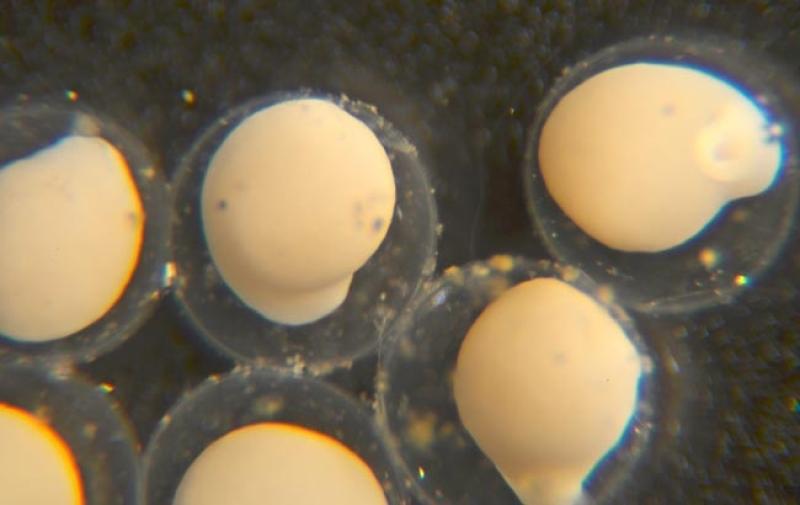A new program to develop culture methods for Pacific lamprey is underway at the NWFSC’s Mukilteo Research Station. Dr. Mary Moser is working with the Confederated Tribes of the Umatilla Indian Reservation to conduct experiments and improve culture methods for this imperiled species throughout the summer.
What are Pacific lamprey?
Like salmon, Pacific lamprey are anadromous, spending most of their lives in the ocean and migrate to fresh water to breed. Pacific lamprey are susceptible to many of the same threats facing other anadromous species listed under the Endangered Species Act—reduced access to spawning habitat, degradation of spawning and rearing areas, predation, and impassable sections of the Columbia River hydropower system. Their long residence time in freshwater also makes lamprey highly vulnerable to the effects of pollution.
Declining lamprey populations in the Columbia River Basin have spurred the development of specialized, lamprey-friendly, fish ladders to take advantage of this species’ unique climbing ability. Before its decline, the lamprey was a very important fish for many of the Tribal people of the Pacific coast and interior Columbia River basin. Tribal people harvested these fish for subsistence, ceremonial, and medicinal purposes.
Mukilteo’s new program to culture Pacific lamprey
Working closely with the Confederated Tribes of the Umatilla Indian Reservation, Dr. Mary Moser has helped develop a new program to culture Pacific lamprey at the NWFSC’s Mukilteo Research Station. An initial batch of lamprey eggs is currently housed in a re-circulating freshwater system at the NWFSC’s Mukilteo Research Station. The developing eggs are being tested with various egg disinfection methods and monitored for viability.
Experiments will continue at Mukilteo through the summer to assess methods for culture of Pacific lamprey larvae, known as ammocoetes. These larvae burrow in sediments and filter feed during their extended freshwater residence, presenting many challenges, and opportunities, for fish culturists.


